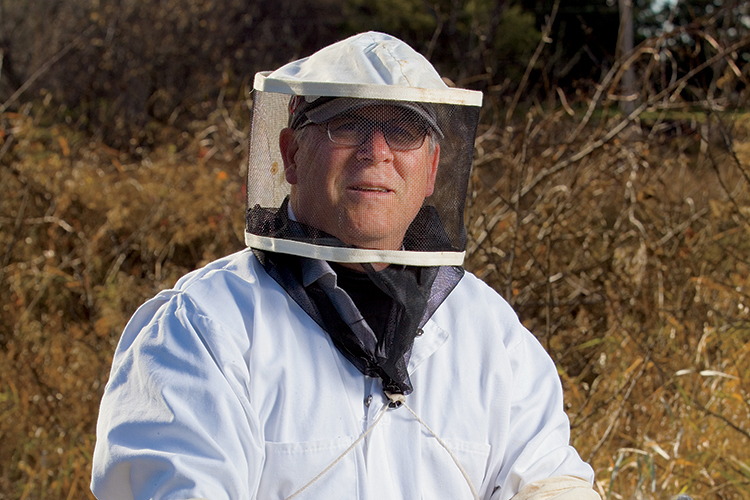Home > Farm > Environment > How Minnesota Pollinators Are Protected
How Minnesota Pollinators Are Protected

University of Minnesota entomologist Marla Spivak loves everything about bees. The meditative hum of their collective work culture. The exquisite, self-organizing beauty of their social behaviors. The silent darting and dancing of their complex language system. The way they take care of themselves – and, in turn, take care of us.
“Bees are the most important pollinators of many flowering plants, fruits, vegetables, oils, almonds and alfalfa, which we grow to feed dairy cattle,” says Spivak. She adds that Minnesota is one of the top six honey-producing states in the nation. Commercial beekeepers bring their bees to Minnesota in the summertime because of its lush clover and other blooms when much of the country is dry.
Bees are responsible for pollinating the nation’s almonds, apples, blueberries, cranberries, raspberries, pumpkins, cucumbers, squash and more. In fact, honeybees and wild bees pollinate more than $18 billion worth of crops in the United States each year.

The Decline
“Recent research indicates honey production is down in Minnesota,” says Spivak. “Lack of floral pastures means lack of good nutrition to keep bees healthy.”
Honeybee numbers have been on the decline in the U.S. since shifting agricultural practices post World War II. The last several years in particular have proven more challenging than ever before. In addition to deadly invasive pests such as the varroa mite (a honeybee parasite), the natural habitats critical to pollinators have been in decline. Experts and regulators are also evaluating the role that agricultural pesticides play. Today, there are fewer managed honeybee colonies than at any time in the last half-century.
![Pollinator Problem [INFOGRAPHIC]](https://eadn-wc01-4177395.nxedge.io/wp-content/uploads/2020/05/Screen-Shot-2015-06-24-at-4.11.39-PM.png) The Problem
The Problem
“Bees have been pollinating agriculture crops for a long time, and pollinating food sources for much of wildlife for millions of years. The problem is not with Mother Nature – Mother Nature can take care of itself,” says John Kooiman. A Minnesota beekeeper for more than 45 years, Kooiman spent 16 of those as a commercial migratory beekeeper managing 2,000 to 3,000 hives at a time. Today, he maintains just five hobby hives in Golden Valley.
“The problem is human beings. Our shortsightedness, our greed, and our failure to understand our interrelatedness and interconnectedness to the natural world.”
The Solution
That’s precisely what Minnesota legislators and administrators are trying to change with the 2013 passage of legislation directing the Minnesota Department of Agriculture to develop and promote best management practices that protect pollinators by providing necessary habitats.
The department’s new “Protect Minnesota Pollinators” campaign encourages all Minnesotans – rural and urban – to carry out that mandate.
“The mantra is ‘Plant more flowers and use pesticides sparingly,’ and that’s what we’ve coalesced around with three different sets of best management practices,” says Minnesota Department of Agriculture’s Joseph Zachmann.
“One set is for home, lawn and gardens, another set is for roadsides and rights-of-way, and then the third is for agricultural landscapes.”
The department has created a pollinator page on its website to give Minnesotans concrete tools and simple steps they can take to help pollinators. The department also highlighted its effort at the Minnesota State Fair last year, handing out pollinator-friendly seed packets and helping fair-goers sign pollinator pledges to plant more flowers, use pesticides sparingly and buy local honey.
“Every individual with a residential yard, if they create more pollinator habitat or plant more flowers that are attractive to pollinators, you add that up and you’ve got thousands and thousands of acres in a metropolitan area,” says Zachmann. “Acres that can support both managed honeybees creating honey in urban environments, as well as all the other pollinators that function to keep our environment healthy and our ecosystem in balance. So the more each individual can do to contribute to the whole, it adds up.”



